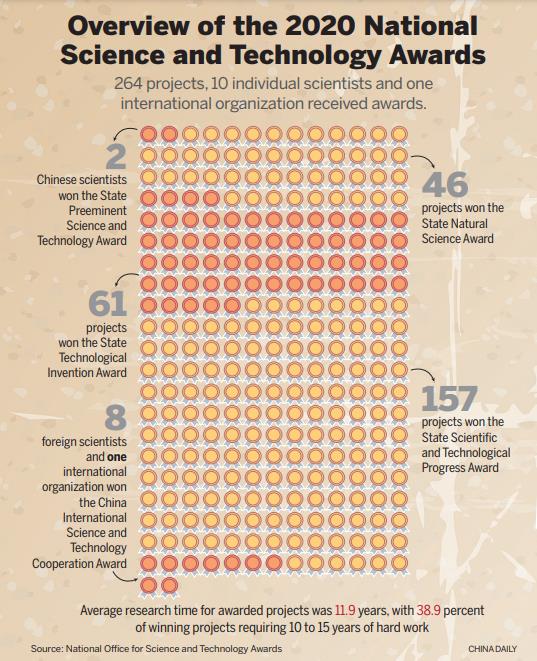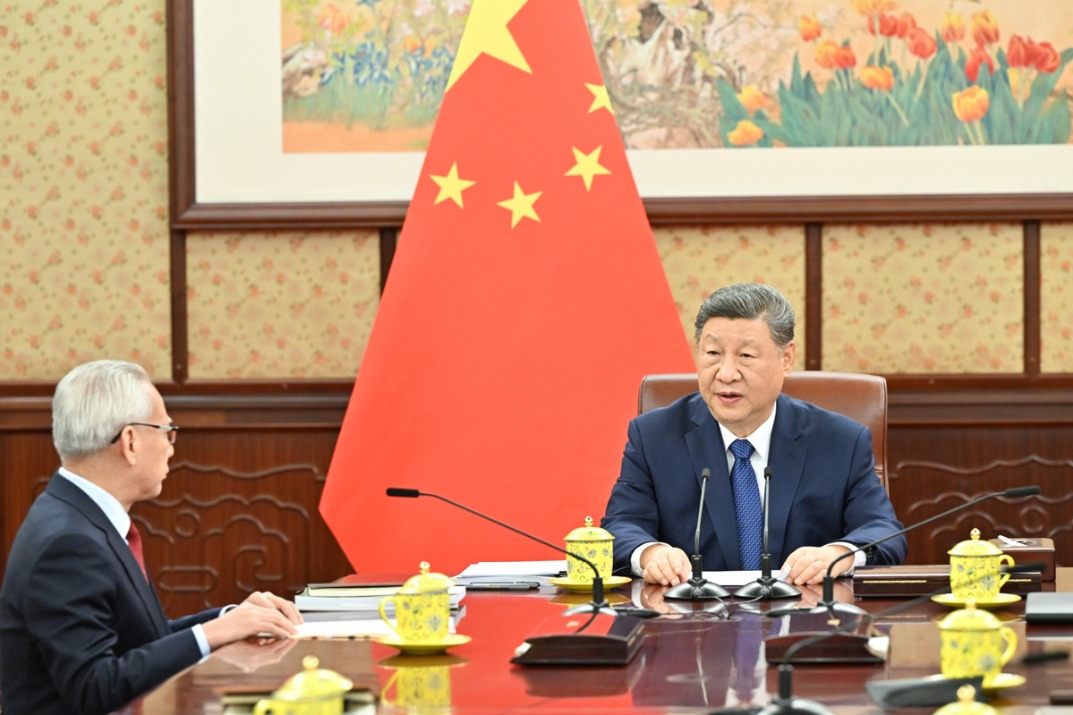Nation honors top scientists


'Master of aircraft design' wins accolade for aviation achievement

Gu Songfen has had a photo on his office desk for many years. The photo, taken in 1958, shows Chairman Mao Zedong holding a model of the Shenyang JJ-1, the first jet aircraft designed in China, and examining it closely.
The renowned aircraft designer, who won the State Preeminent Science and Technology Award on Wednesday, is the only person in the country's aviation industry to hold membership of both the Chinese Academy of Sciences and the Chinese Academy of Engineering.
He pioneered the aerodynamic design of aircraft, which advanced the development of a number of major jet fighters, including the Nanchang CJ-6, a basic training plane, and the Shenyang J-8, a high-speed, high-altitude single-seat interceptor.
Those aircraft not only greatly improved China's air defense capabilities but also laid the cornerstone of its aviation industry.
Gu's aviation achievements started with the JJ-1. In 1956, China's first aircraft design office was established in Shenyang, Liaoning province.
Its first task was to develop the country's first homegrown jet aircraft, and Gu was appointed as head of the aerodynamics team.
Zhao Xia, an aircraft designer at the AVIC Shenyang Aircraft Design and Research Institute, said aerodynamics is the "soul" of aircraft design. The study of the way objects move through air must not only ensure that an aircraft can fly efficiently and carry weapons, but also guarantee the stable, safe operation of the engine, she said.
However, in the 1950s, the country had no aviation experience, equipment or wind tunnels. When Gu heard that the library at Beihang University in Beijing had foreign literature on the subject, he headed to the capital and visited the library every day for a week to copy the information.
Using this as a general reference, Gu managed to gradually complete his research, and on July 26, 1958, after two years of development, the JJ-1 made its maiden flight from a facility in Shenyang.
























